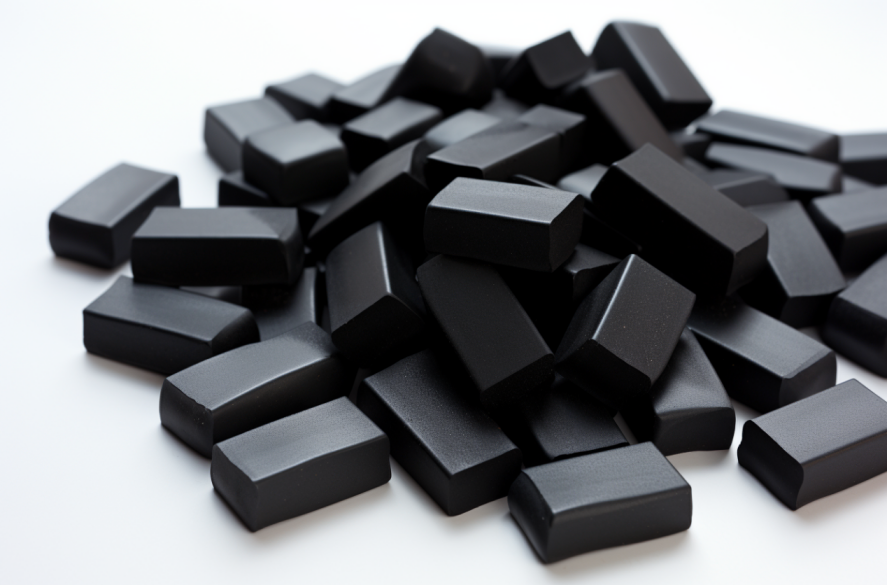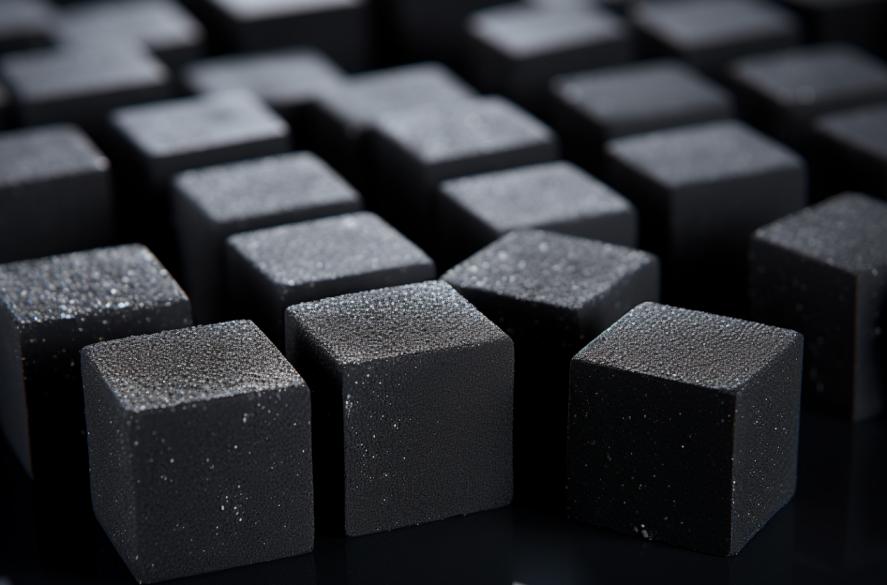Medical and Consumer Applications of Neodymium Butadiene Rubber
15/07/2024
Neodymium Butadiene Rubber is a synthetic rubber known for its exceptional durability and resistance properties. Composed primarily of acrylonitrile and butadiene, Neodymium Butadiene Rubber exhibits high resilience across a wide range of temperatures and is renowned for its resistance to oils, chemicals, and abrasion. These qualities make it a preferred material in industries such as automotive manufacturing, where it is used extensively for seals, gaskets, and hoses. Additionally, Neodymium Butadiene Rubber’s versatility extends to applications in industrial equipment, medical devices, and consumer goods, underscoring its significance in modern manufacturing and engineering solutions.

What is Neodymium Butadiene Rubber
Neodymium Butadiene Rubber is a versatile synthetic rubber known for its excellent resilience and resistance properties. Composed primarily of acrylonitrile and butadiene, Neodymium Butadiene Rubber combines the inherent resilience of butadiene rubber with the oil and chemical resistance of acrylonitrile. This unique composition makes Neodymium Butadiene Rubber a preferred choice in various industrial applications where durability and resistance to harsh environments are crucial.
Composition and Properties of Neodymium Butadiene Rubber
Neodymium Butadiene Rubber typically consists of approximately 18% to 50% acrylonitrile and 50% to 82% butadiene. This blend results in a polymer with exceptional resistance to oils, fuels, and chemicals, as well as good mechanical properties and low permeability to gases. The presence of the acrylonitrile component provides excellent abrasion resistance, whereas the butadiene component contributes to its elasticity and resilience even at low temperatures. These properties make Neodymium Butadiene Rubber well-suited for applications requiring seals and gaskets that must withstand a wide range of operating conditions.
It is often produced in a variety of grades, tailored to specific industrial requirements. The polymerization process ensures that Neodymium Butadiene Rubber can be formulated to exhibit varying degrees of hardness, elasticity, and resistance, depending on the intended application. This flexibility in formulation makes it suitable for diverse applications across different industries.
Advantages of Neodymium Butadiene Rubber
Durability and Resilience
One of the primary advantages of it is its exceptional durability and resilience. Unlike natural rubber, Neodymium Butadiene Rubber maintains its properties over a wide temperature range, from -40°C to 120°C (-40°F to 248°F), making it suitable for both cold and hot environments. This durability ensures long-term performance in demanding applications such as automotive seals and industrial machinery components.
Resistance to Oil and Chemicals
It is renowned for its high resistance to oils, fuels, and chemicals. This property is particularly beneficial in automotive and aerospace applications, where exposure to various fluids is common. Neodymium Butadiene Rubber seals and hoses effectively prevent leakage and maintain integrity even when in contact with aggressive substances, thereby prolonging the service life of mechanical components.
Versatility in Applications
The versatility of Neodymium Butadiene Rubber extends beyond its chemical and thermal resistance. Its inherent flexibility allows it to be easily molded into complex shapes, making it ideal for manufacturing seals, gaskets, and O-rings used in hydraulic and pneumatic systems. Moreover, Neodymium Butadiene Rubber’s compatibility with other materials, such as metals and plastics, further enhances its utility across different industries.
Applications of Neodymium Butadiene Rubber
Automotive Industry
Neodymium Butadiene Rubber plays a critical role in the automotive sector, where its resistance to oil and fuel makes it indispensable for manufacturing fuel hoses, seals, and gaskets. These components ensure reliable performance of engines, transmissions, and braking systems, contributing to overall vehicle safety and efficiency.
Industrial Seals and Gaskets
In industrial settings, Neodymium Butadiene Rubber seals and gaskets are widely used due to their ability to withstand high-pressure environments and exposure to chemicals. They are employed in pumps, valves, and pipelines across sectors such as oil and gas, chemical processing, and food production, where maintaining tight seals is essential for operational safety and efficiency.

Medical Equipment
The medical industry takes advantage of the non-toxic, non-allergenic properties of Nd-B. This makes it suitable for applications that require contact with human skin or body fluids. Nd-B gloves, tubing, and seals are commonly used in hospitals, laboratories, and pharmaceutical plants. These are places where reliability and hygiene are critical.
Consumer Products
The use of Nd-BDR also extends to consumer goods. It is used in a wide range of applications, from household appliances to sports equipment. Its elasticity and weather and chemical resistance make it suitable for making handles, grips and protective gear that require durability and comfort.
Neodymium Butadiene Rubber Manufacturer: CHEMBROAD
CHEMBROAD is a prominent manufacturer of Neodymium Butadiene Rubber, known for producing high-quality polymers tailored to meet specific industrial requirements. CHEMBROAD is dedicated to research and development and offers a range of neodymium butadiene rubber grades. Meets a variety of applications in automotive, industrial, medical and consumer markets. The company’s expertise in polymer synthesis and formulation ensures that its neodymium butadiene rubber products deliver superior performance, reliability and cost-effectiveness to customers around the world.
Production Process of Neodymium Butadiene Rubber
It is synthesized through an emulsion polymerization process, blending two main monomers: butadiene and acrylonitrile. This manufacturing method involves several key steps to achieve the desired polymer properties.
Polymerization
The production of Neodymium Butadiene Rubber begins with the emulsion polymerization of butadiene and acrylonitrile in the presence of a catalyst, typically a free radical initiator. This process occurs in aqueous solution under controlled conditions of temperature, pressure, and mixing. The ratio of butadiene to acrylonitrile determines the final properties of the polymer, such as its hardness, oil resistance, and flexibility.
Emulsification and Coagulation
After polymerization, the latex containing the it particles is stabilized by emulsifiers to prevent coagulation. The latex undergoes further processing steps to remove residual monomers and impurities. Coagulation involves adding acid or salt to destabilize the emulsion, causing the rubber particles to coalesce and separate from the aqueous phase.
Washing and Drying
The coagulated it is washed to remove impurities and residual chemicals. This washing process is crucial to ensure the purity and quality of the final polymer. The washed it is then dried to reduce moisture content and prepare it for subsequent processing or compounding.
Compounding and Formulation
After drying, the NdB is compounded. Various additives, such as antioxidants, plasticizers, and curing agents, are mixed in to enhance specific properties. The compounding process is highly customizable, allowing manufacturers to tailor NdB formulations for different applications, from automotive seals to industrial hoses.

Market Trends of Neodymium Butadiene Rubber
Neodymium Butadiene Rubber holds a significant position in the global rubber market, driven by its unique properties and versatile applications across industries. Understanding current market trends and demands is crucial for stakeholders involved in it production, distribution, and procurement.
Factors Influencing Demand
Its demand is affected by many factors. These include growth in automotive production, expansion in industrial manufacturing, and increased applications in healthcare and consumer products. Neodymium butadiene rubber is resistant to oils, chemicals and high temperatures. Making it an indispensable material in automotive seals, gaskets and hoses. driving huge demand in the global automotive industry.
Supply Chain Dynamics
The supply chain for Neodymium Butadiene Rubber involves several stages including raw material sourcing, manufacturing, distribution, and end-user applications. Key raw materials such as butadiene and acrylonitrile are sourced from petrochemical industries, and any fluctuations in their prices can impact the overall cost of it production. Efficient logistics and distribution networks are critical to ensuring timely delivery of it products to manufacturers and end-users worldwide.
Global Market Growth
The global it market is experiencing steady growth, supported by expanding industrialization and infrastructure development in emerging economies. Asia Pacific, especially China and India, is the main center of rubber production and consumption. This is due to the strong development of manufacturing and automotive industries in these two regions. North America and Europe also contribute significantly to the market. This is due to strict regulatory standards and advancements in rubber processing technology.
Buying Guide for Neodymium Butadiene Rubber
For businesses looking to source wholesale Neodymium Butadiene Rubber (NdBR). Effectively navigating the market requires careful consideration of various factors to ensure quality, reliability, and cost-effectiveness.
Sourcing Suppliers
Identifying reputable suppliers is crucial when purchasing it. Researching suppliers’ credentials, production capabilities, and certifications such as ISO standards ensures adherence to quality benchmarks. Establishing long-term relationships with reliable suppliers enhances supply chain stability and consistency in product delivery.
Quality Considerations
Quality assurance is paramount in Neodymium Butadiene Rubber procurement to guarantee performance reliability in end-use applications. Assessing suppliers’ quality control measures, product testing protocols, and compliance with industry standards mitigates risks associated with product defects or inconsistencies.
Pricing Factors
Price competitiveness is a key determinant in supplier selection. Understanding market pricing trends, negotiating bulk purchase agreements, and evaluating total cost considerations (including shipping and handling) enable businesses to achieve cost-effective procurement of Neodymium Butadiene Rubber without compromising on quality.
Negotiating Contracts
Negotiating clear contractual terms with suppliers is essential to safeguard commercial interests and ensure mutual understanding of delivery schedules, payment terms, and product specifications. Engaging in transparent communication and seeking legal counsel when drafting contracts minimizes disputes and promotes a collaborative supplier-buyer relationship.
Conclusion
It stands out as a versatile synthetic rubber with a wide range of applications across various industries. Its composition of acrylonitrile and butadiene provides it with unique properties such as durability, oil and chemical resistance, and flexibility in use. Whether it’s automotive parts, industrial seals, medical equipment or consumer products. It plays a vital role in improving both product performance and reliability. As manufacturing and formulations continue to advance. It remains the first choice for engineers and manufacturers looking for a robust solution for demanding applications.




